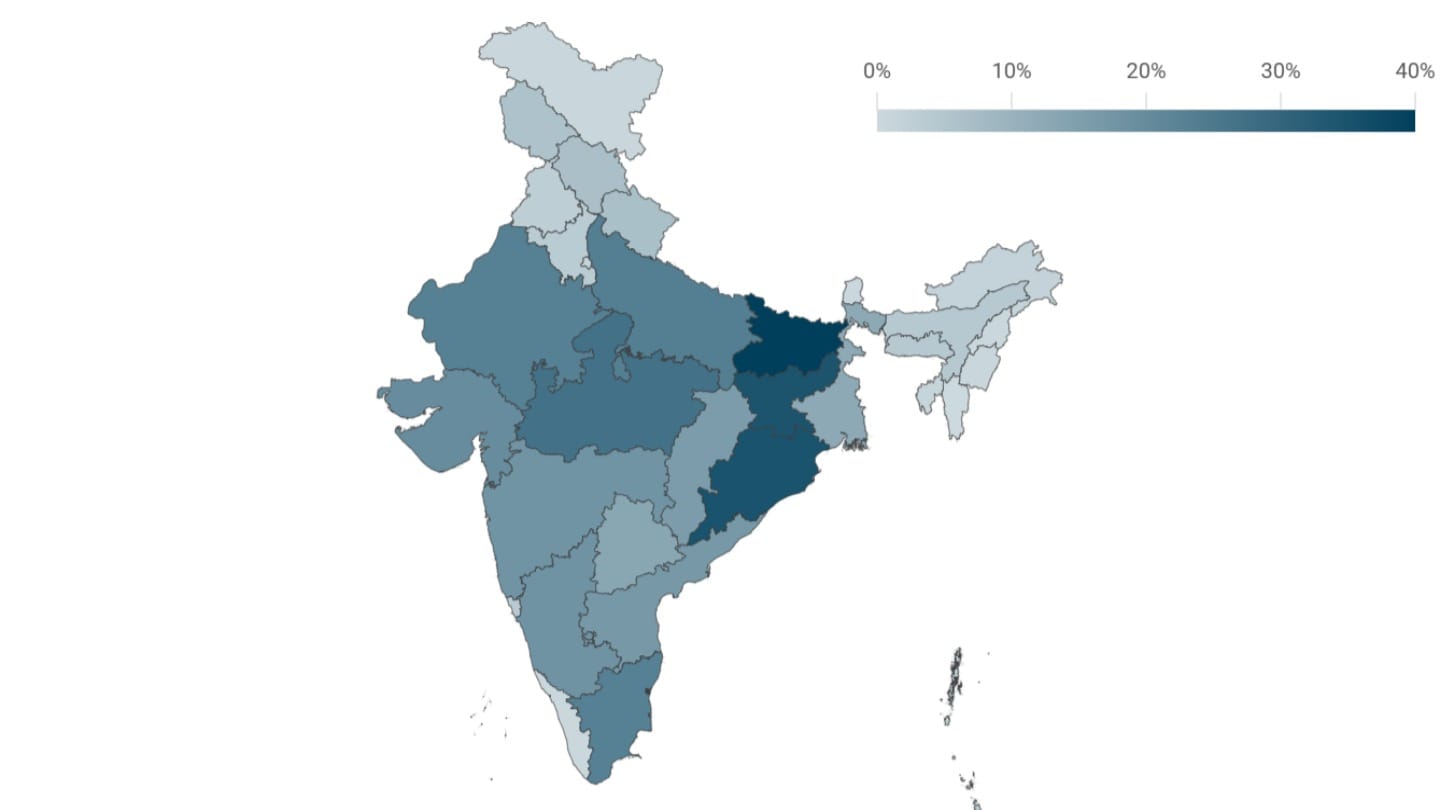Higher education
Enrolment in higher education has grown relatively slowly in India, and large regional and gender gaps persist.
Higher education is seen as being key to getting young Indians into skilled jobs, and to accelerating economic growth. Just under 40 million young Indians were enrolled in higher education as of 2022.
Enrolment in tertiary or higher education in India is still below the world average.[1] In the early 1990s, India's higher education enrolment rates were similar to those of China, for instance. But in the two decades since, China has made big strides, and more than seven in ten young Chinese adults are now in higher education, as compared to three out of ten Indian young adults.
Higher education includes undergraduate (or equivalent) and postgraduate (or equivalent) levels of study. Of the 33 million students enrolled at the undergraduate level, programs under the Arts discipline have the highest inflow of students, followed by Engineering. More male students than female are enrolled in undergraduate courses, and there are more than twice as many male students in engineering as female students.
Additionally, there are 5.1 million students enrolled in postgraduate programmes such as masters degrees[2]. Here too, the social sciences attract the most students, followed by science. At the post-graduate level there are more female students enrolled, but male students outnumber female students in management courses.
There are stark differences between states in higher education, with richer states having a higher share of graduates in the population. Nearly one in four people in Kerala are graduates, while fewer than one in twenty in Assam have a higher education degree.
Education data in India
There are two key sources of data when it comes to education in India - administrative data and survey data.
The departments under the Ministry of Education collect data on schools, colleges, universities, teachers, enrolment and educational and general infrastructure every year. While the Department of School Education and Literacy covers pre-primary level to Class 12 under the Unified District Information System for Education[3] (UDISE), the All India Survey on Higher Education by the Department of Higher Education[4] (AISHE) records data for education beyond Class 12. These data originate at the level of an educational institution.
The second major source are surveys - mainly the nationally representative household sample surveys from the National Sample Survey Office (NSSO), and the Census, conducted every ten years (no Census has been conducted in India since 2011). The NSSO has conducted five surveys focusing on education from the 1980s to 2018[5]. They record indicators such as the status of enrolment, the level of completed education, reasons for not attending and so on. Apart from surveys that especially focus on education, basic questions on the completed education level are covered by nearly all NSSO surveys, including the Periodic Labour Force Survey, which are conducted frequently and provide the most recent data.
The erstwhile Ministry of Human Resource Development began capturing school education statistics in an organised manner at the district level in 2000 (DISE). Structured data on higher education started getting captured from 2007, although the more structured AISHE began only in 2012. The coverage of these statistics improved every year, and the data captured a higher number of indicators over successive years. For instance, the earlier DISE surveys captured dropout rates only at the primary level. In 2013, dropout rates at the secondary level were reported for the first time.
This is a key reason we use administrative data such as the UDISE for looking at trends and progress in recent years, and nationally representative surveys from the NSSO for years prior to 2000. NSSO surveys also become important to ascertain some qualitative parameters such as the reasons for dropping out of school, enrolment and attainment by regions (rural and urban) and age group, the type of institution students are studying in, and a few more.
This piece uses both data sources.
[1] The World Bank's World Development Indicators term the levels as Primary, Secondary and Tertiary
[2] Data does not include postgraduate diplomas and doctorate programmes
[3] Recent data and detailed tables on school education from UDISE+ maintained separately, while older reports are maintained at a different location.
[4] The first AISHE report was published in 2012-13. Statistics on higher education were released in separate reports before that.
[5] The Ministry of Statistics and Programme Implementation maintains the unit level data for most of the NSSO surveys on the microdata website.




